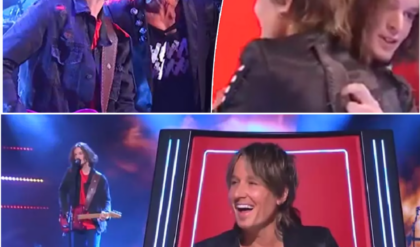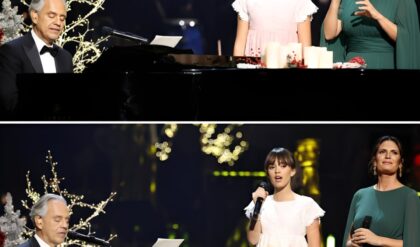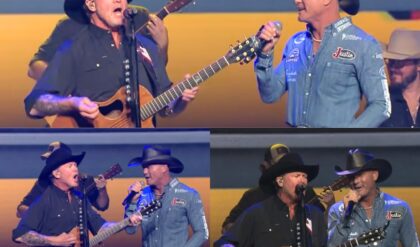In the heart of Hollywood, where dreams are manufactured and innovation thrives, Elon Musk has once again blurred the lines between technology and everyday life. The Tesla Diner, a retro-futuristic eatery that opened its doors in July 2025, has quickly become a sensation, drawing crowds of tech enthusiasts, foodies, and electric vehicle owners alike. With long lines snaking around the block, viral social media posts, and a unique blend of 1950s nostalgia and cutting-edge Tesla tech, the diner has proven that Musk’s vision extends far beyond cars and rockets. Now, riding on this wave of success, the billionaire entrepreneur is gearing up for his most ambitious hospitality venture yet: a chain of conveyor belt restaurants where every aspect of service—from order taking to food delivery—is handled by robots. This isn’t just a meal; it’s a glimpse into a future where dining is seamless, efficient, and utterly mesmerizing.
The story begins with the Tesla Diner, a project Musk first teased back in 2018 as a whimsical drive-in theater and restaurant attached to a Supercharger station. After years of anticipation, delays, and hype, the diner finally materialized on Santa Monica Boulevard in Los Angeles. Designed with a sleek, Cybertruck-inspired steel exterior that gleams under the California sun, the two-story establishment is more than a pit stop—it’s an experience. Patrons pull up to one of 80 charging stalls, where they can order via the Tesla app while their vehicles juice up. Food arrives directly to their cars, served in vented boxes shaped like the iconic Cybertruck, complete with embossed lightning-bolt icons on waffles that evoke a sense of playful branding.
Inside, the atmosphere is a masterful fusion of past and future. Downstairs booths offer a cozy diner vibe, while upstairs on the rooftop “Skypad,” diners enjoy outdoor seating under massive 66-foot megascreens that play a curated mix of classic films like “Spaceballs,” vintage “Star Trek” episodes, live SpaceX launches, and Tesla promotional videos. The menu sticks to American comfort food classics: smash burgers with caramelized onions and cheese, chicken tenders sandwiched between waffles, all-beef hot dogs, tallow-fried french fries, and milkshakes that promise to evoke childhood memories. Prices are accessible—burgers around $13, fries at $4—making it appealing to a broad audience, not just Tesla owners.
Customer experiences have been overwhelmingly positive, turning the diner into a must-visit destination. On opening day, lines stretched for hours, with fans eagerly waiting to interact with Optimus, Tesla’s humanoid robot prototype, which handed out popcorn with a wave and a programmed quip. One visitor, Taju, described it as having a “vintage vibe but futuristic at the same time,” while another, Don, a Model 3 owner, vowed to bring out-of-town friends, predicting they’d be “impressed.” Even skeptics have been won over by the seamless integration of tech: app-based ordering ensures minimal wait times for Tesla drivers, and the 24/7 operation caters to night owls and road trippers. Social media buzz has amplified the hype, with TikTok videos of Optimus in action garnering millions of views, and Instagram posts showcasing the diner’s aesthetic going viral.
The diner’s success isn’t just anecdotal—it’s quantifiable. In its first week alone, reports indicate thousands of meals served, with merchandise like Tesla-branded T-shirts, gummy candies, and robot action figures flying off the shelves. Protesters have occasionally gathered outside, waving signs criticizing Musk’s politics, but they’ve been outnumbered by enthusiastic fans, including families with kids mesmerized by the screens and robots. Food critics have mixed reviews on the grub—some call the burgers “agreeable but not revolutionary,” and there have been complaints about inconsistent menu availability, like missing salads or pies—but the overall consensus is that the experience transcends the plate. As one reviewer put it, “It’s like eating in a sci-fi movie set.”
Emboldened by this triumph, Musk wasted no time in announcing his next move. In a series of posts on X (formerly Twitter), he hinted at expanding the concept into a full-fledged chain, but with a twist: conveyor belt restaurants entirely staffed by robots. “If our retro-futuristic diner turns out well, which I think it will, Tesla will establish these in major cities around the world,” Musk wrote, teasing a global rollout. Sources close to the project reveal that the new chain, tentatively dubbed “Tesla Convey,” will build on the diner’s foundation but introduce a high-tech conveyor system inspired by Japanese kaiten-zushi (conveyor belt sushi) restaurants, elevated to a whole new level with Tesla’s robotics expertise.
Imagine this: You enter a sleek, minimalist space adorned with Tesla motifs—glowing neon logos, interactive screens displaying real-time EV stats, and ambient lighting that shifts with the time of day. Instead of traditional tables, diners sit around a looping conveyor belt that carries an array of dishes: gourmet burgers, fresh salads, artisanal pizzas, vegan options, and even international fusions like robot-prepared sushi rolls or Mexican street tacos. But here’s the game-changer—no human waitstaff. Optimus robots, now in their advanced Gen 2 form, patrol the floor, taking orders via voice recognition or app integration, customizing meals with AI precision, and delivering them directly from the belt to your table. Need a refill? A robot glides over with a tray. Spilled something? Another Optimus cleans it up in seconds.
This isn’t mere gimmickry; it’s a response to real-world challenges in the hospitality industry. Labor shortages have plagued restaurants for years, with high turnover and rising wages squeezing margins. Musk’s vision leverages Tesla’s Optimus bots, which he claims can perform tasks with human-like dexterity, to create a fully automated ecosystem. “Optimus will do household chores and cure poverty,” Musk has boldly stated in past presentations, and now he’s applying that to dining. In the conveyor belt setup, robots handle everything from cooking (with automated arms flipping patties or assembling salads) to serving, ensuring consistency and speed. Integration with the Tesla ecosystem adds flair: Owners can pre-order via their car’s infotainment system, have food ready upon arrival, and even earn loyalty points redeemable for Supercharger credits or merchandise.
To make it even more engaging, the restaurants will incorporate gamification elements. Touchscreens at each seat let diners “hunt” for special items on the belt, with rewards like free desserts for quick grabs. AR filters via a companion app could overlay fun animations, turning a simple meal into an interactive adventure. For families, kid-friendly robots might tell jokes or play games, while adults enjoy seamless payments through Tesla Pay. Sustainability is key too—ingredients sourced locally, packaging biodegradable, and energy powered by solar panels, aligning with Musk’s eco-conscious brand.
Expansion plans are aggressive. Starting with prototypes in key U.S. cities like New York, Austin, and San Francisco by late 2026, the chain aims to go international, targeting hubs like Tokyo, London, and Berlin where conveyor belt dining already has a foothold. Musk envisions tying these restaurants to Tesla’s growing network of Superchargers, creating “hubs” where drivers recharge both their vehicles and themselves on long trips. Analyst Dan Ives from Wedbush has praised this as part of Tesla’s “all-encompassing brand” strategy, noting it could revive the company’s image amid slumping EV sales. “This is the next leg of the Tesla growth story,” Ives said, highlighting how it leverages the cult-like following without heavy advertising.
Of course, not everything is smooth sailing. Critics worry about job displacement, with automation potentially eliminating thousands of service roles. There are also questions about reliability—early Optimus demos have shown glitches, like awkward movements or failed interactions. Food purists might decry the lack of human touch, arguing that dining is as much about connection as cuisine. Protests at the original diner hint at broader backlash against Musk’s polarizing persona. Yet, Musk counters with optimism: “Robots will free humans for creative work,” he argues, positioning this as progress.
As we look ahead, Tesla Convey represents more than a chain—it’s a bold statement on the future of dining. In a world where AI and robotics are infiltrating every sector, Musk is betting that people crave not just food, but spectacle. The Tesla Diner was the appetizer; this conveyor belt revolution is the main course. Whether it becomes a staple or a fleeting fad, one thing’s certain: Elon Musk is serving up innovation, one robot at a time.





